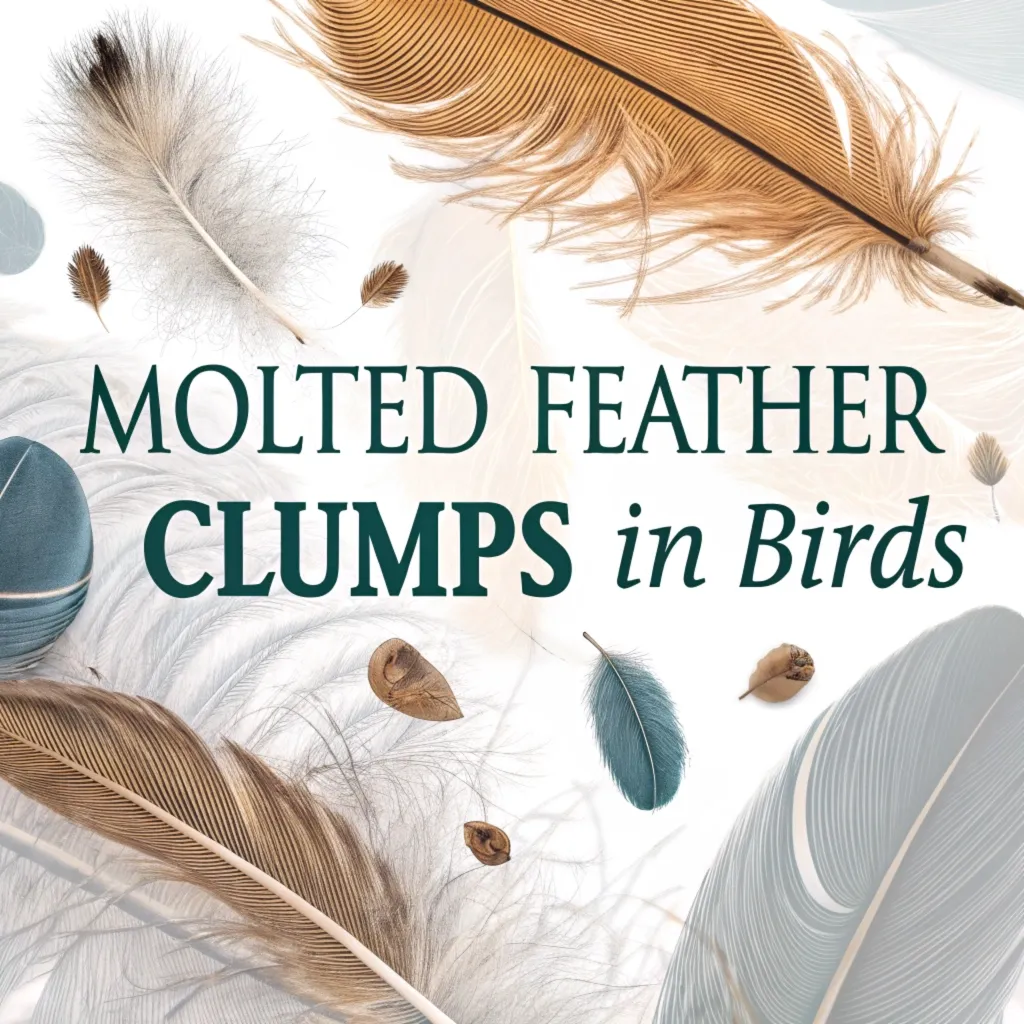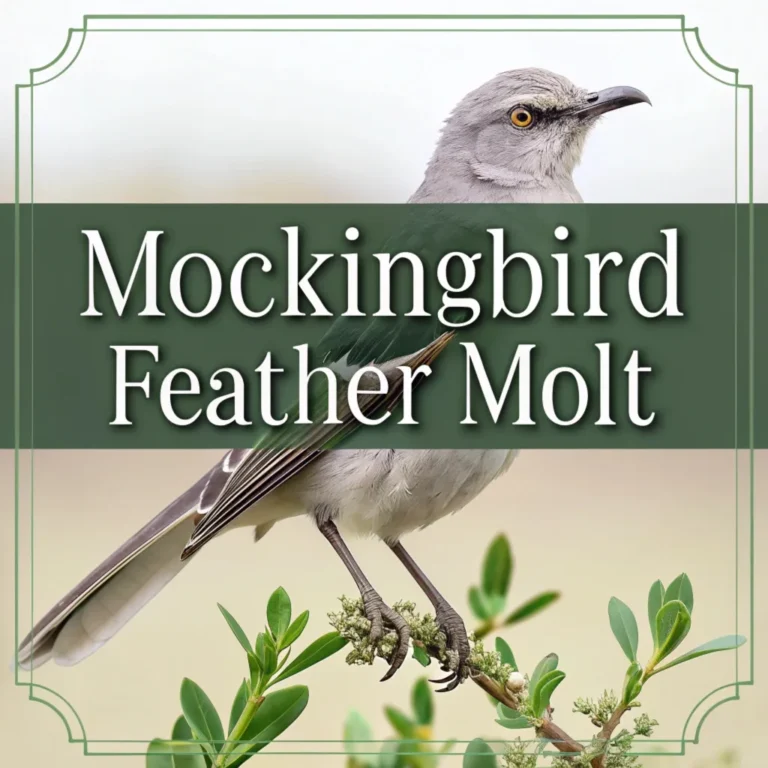Molted Feather Clumps in Birds: Insights on Fright Molts
Birds shed feathers naturally through molting. However, some birds can lose feathers suddenly in stressful situations.
This process, called fright molt, helps birds escape predators. Let’s explore fright molts in birds and what they reveal about avian biology and behavior.
Fright molt is a fascinating adaptation that showcases the remarkable survival mechanisms of birds. This sudden feather loss, triggered by stress or perceived threats, allows birds to escape dangerous situations quickly.
Understanding this phenomenon provides valuable insights into avian physiology and behavior, highlighting the intricate ways birds have evolved to navigate their often perilous environments.
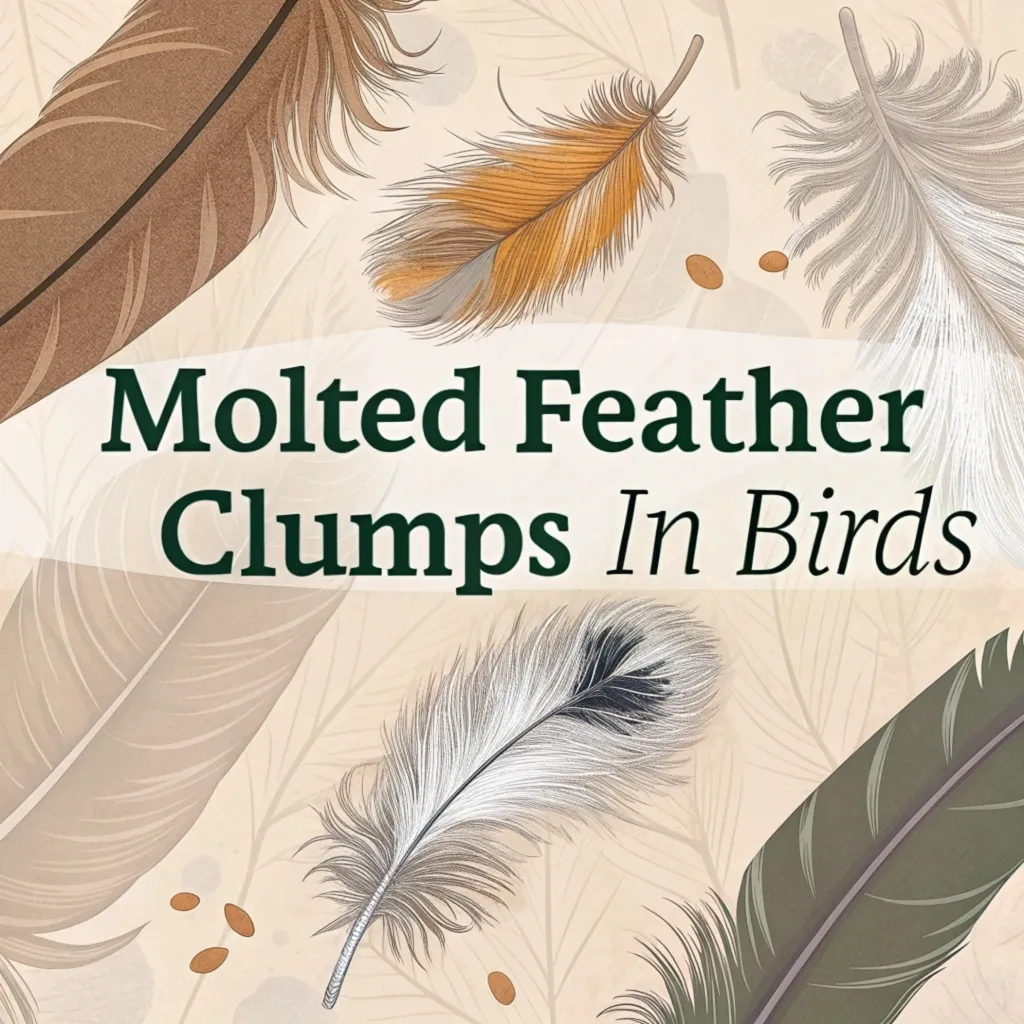
Key Takeaways: Fright Molts Explained
- Fright molt: Birds shed feathers suddenly when stressed or threatened
- Survival tactic: Allows birds to escape predator attacks by leaving feathers behind
- Affected areas: Usually involves tail and rump feathers
- Species differences: More common in some bird species than others
- Recovery: Feathers regrow within weeks in healthy birds
- Trade-off: Temporary loss of flight stability for increased chance of survival
- Natural process: Part of birds’ evolved defense mechanisms
- Minimal harm: Typically does not cause bleeding or skin damage
- Pet birds: Can occur during handling or veterinary procedures
- Observation: Helps distinguish normal molting from stress responses
What is Fright Molt in Birds?
Fright molt refers to the sudden loss of feathers in birds due to stress or perceived threats. This process differs from regular molting, which involves gradual feather replacement over time.
Birds use fright molt as a defense mechanism against predators. When a predator grabs a bird’s feathers, the bird can shed them quickly to escape.
The evolutionary significance of fright molt highlights the constant arms race between predators and prey in nature. This adaptation has developed over millions of years, fine-tuning birds’ ability to survive in diverse and often hostile environments.
The fact that birds can sacrifice a part of their body without significant harm demonstrates the incredible plasticity of avian physiology and the importance of feathers in their survival strategy.
Fright molt also provides a window into the stress responses of birds, offering insights into their perception of threats and environmental pressures.
By studying when and how birds employ this defense mechanism, researchers can better understand the challenges birds face in both natural and human-altered habitats.
This knowledge is crucial for developing effective conservation strategies and improving our coexistence with avian species in urban and rural settings.
How Fright Molt Works
During a fright molt, birds lose feathers from specific body areas:
- Tail feathers
- Rump feathers
- Back feathers
These feathers detach easily when pulled, allowing the bird to flee while leaving the predator with only a clump of feathers.
The physiological process behind fright molt is a marvel of avian biology. When a bird experiences sudden stress or perceives a threat, its body releases stress hormones that trigger a rapid response in the feather follicles.
This hormonal surge causes the feathers to loosen at their base, making them easy to detach without causing damage to the skin or underlying tissues.
The precision of this response is remarkable, as it targets only specific feather groups while leaving others intact.
The speed and efficiency of fright molt demonstrate the incredible adaptability of birds. This mechanism allows them to make split-second decisions that can mean the difference between life and death.
The ability to sacrifice a non-vital part of their body for survival showcases the sophisticated balance between self-preservation and physical integrity in avian species. It’s a testament to the power of natural selection in shaping highly specialized defense strategies.
Benefits of Fright Molt for Bird Survival
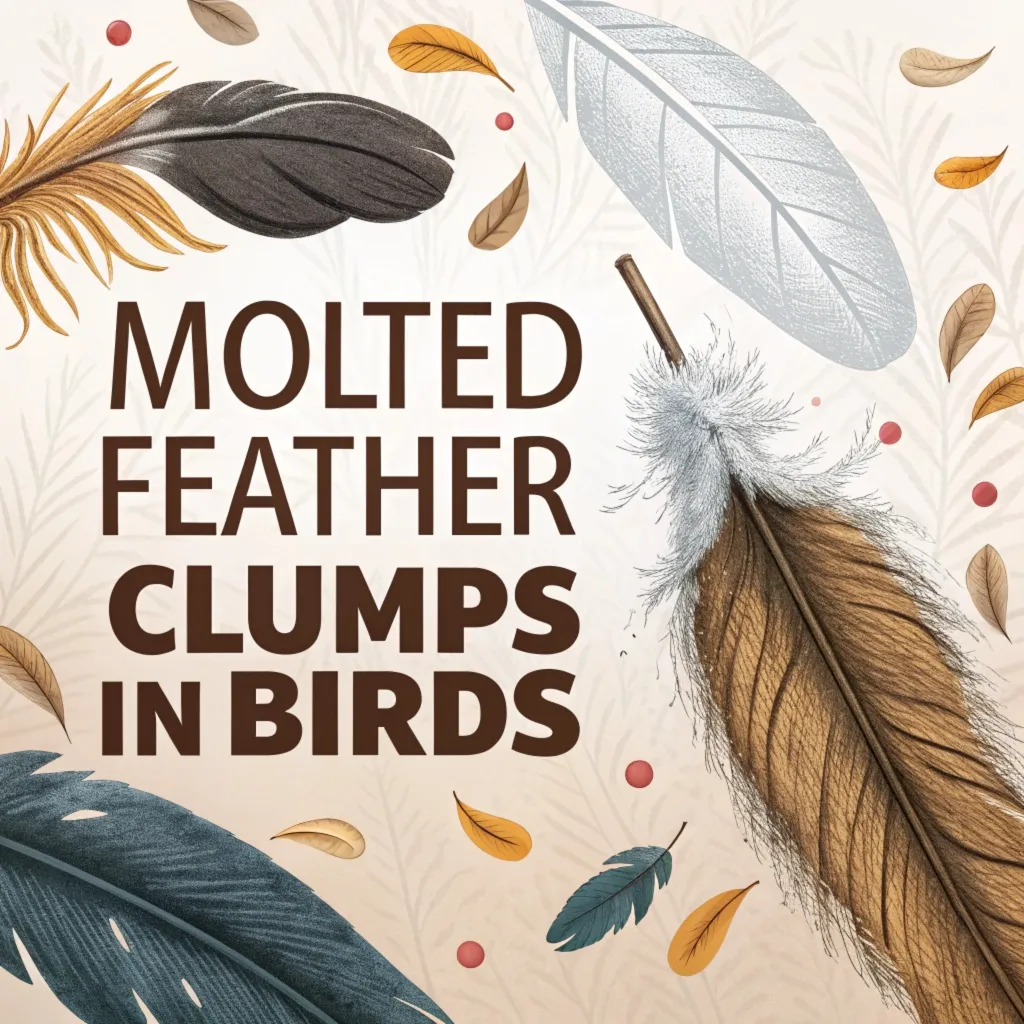
Fright molt offers several survival advantages for birds:
- Escape from predators: Birds can slip away when caught
- Confusion tactic: Falling feathers may distract predators
- Minimal injury: Feather loss prevents skin damage
This adaptation is similar to how lizards can shed their tails when attacked.
The evolutionary success of fright molt as a survival strategy is evident in its widespread occurrence across various bird species. This adaptation has likely played a crucial role in the diversification and survival of birds in different ecosystems.
By providing an effective means of escape from predators, fright molt has allowed birds to exploit a wide range of habitats and ecological niches, contributing to their evolutionary success and biodiversity.
From an ecological perspective, fright molt influences predator-prey dynamics and energy flow within ecosystems.
When a bird escapes through fright molt, it not only survives but also denies the predator a meal, potentially impacting the predator’s hunting success and energy balance.
This interaction ripples through the food web, affecting population dynamics and ecosystem stability. Understanding these intricate relationships helps ecologists better comprehend the complex interplay between species in natural systems.
Fright Molt vs. Regular Molting
Key differences between fright molt and regular molting include:
| Fright Molt | Regular Molting |
|---|---|
| Sudden feather loss | Gradual feather replacement |
| Stress-induced | Seasonal or cyclical |
| Localized to specific areas | Affects entire body |
| Occurs at any time | Follows predictable patterns |
The contrast between fright molt and regular molting highlights the versatility of feather biology in birds.
While regular molting is a planned, cyclical process essential for maintaining feather quality and adapting to seasonal changes, fright molt is an emergency response that prioritizes immediate survival over long-term feather condition.
This dual system of feather management demonstrates the complex balance birds maintain between routine maintenance and acute survival needs.
Understanding the differences between these two types of feather loss is crucial for bird researchers and caretakers. It allows for more accurate assessments of bird health and stress levels in both wild and captive populations.
By distinguishing between normal molting patterns and stress-induced feather loss, ornithologists and avian veterinarians can better diagnose and address issues affecting bird welfare, leading to improved conservation efforts and more effective care strategies for captive birds.
Species Prone to Fright Molt
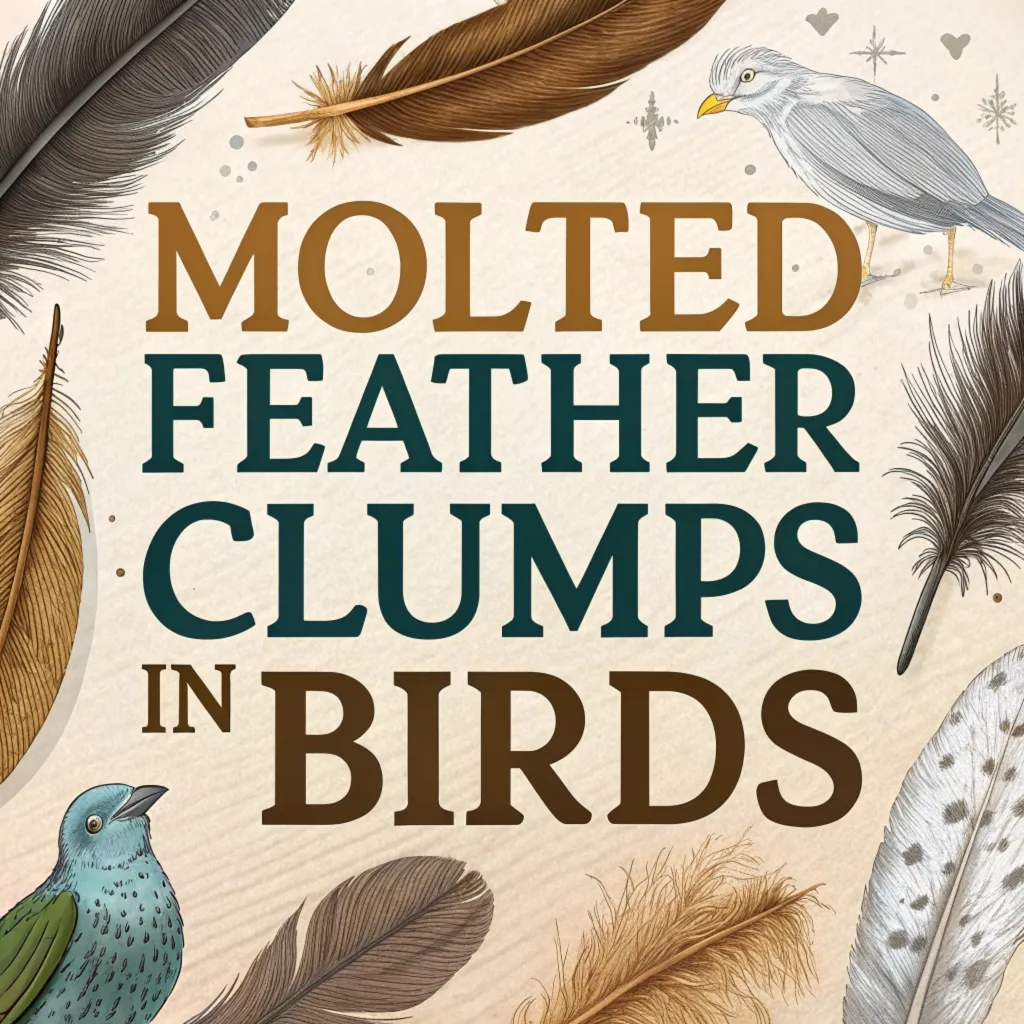
Some bird species are more likely to experience fright molt:
- Diamond doves: Known for being shy and anxious
- Small songbirds: Often targeted by predators
- Ground-dwelling birds: More vulnerable to attacks
Larger birds and parrots tend to be less prone to fright molt.
The prevalence of fright molt in certain bird species provides valuable insights into their evolutionary history and ecological roles. Species that are more prone to fright molt often occupy niches where they face frequent predation pressure.
This adaptation has likely played a significant role in their survival and population dynamics over time. By studying these species-specific differences, researchers can better understand the selective pressures that have shaped various bird lineages.
The variation in fright molt susceptibility among bird species also reflects differences in their physiology, behavior, and habitat preferences. For instance, ground-dwelling birds may rely more heavily on fright molt as a defense mechanism due to their increased vulnerability to terrestrial predators.
In contrast, larger birds or those with strong beaks and talons might have evolved alternative defense strategies. This diversity in defense mechanisms highlights the complex interplay between physical attributes, behavior, and environmental factors in shaping avian survival strategies.
Identifying Fright Molt in Pet Birds
Pet bird owners should be aware of potential fright molt triggers:
- Handling by unfamiliar people
- Veterinary examinations
- Attacks by other pets
- Sudden loud noises or movements
Look for sudden loss of tail or rump feathers without signs of injury.
Recognizing fright molt in pet birds is crucial for responsible ownership and optimal care. Owners who can identify this stress response are better equipped to create a safe and comfortable environment for their avian companions.
By understanding the triggers and signs of fright molt, pet owners can take proactive steps to minimize stressors and ensure their birds feel secure.
This knowledge also helps in distinguishing between normal feather loss and stress-induced shedding, leading to more informed decisions about when to seek veterinary care.
The ability to identify fright molt in pet birds also provides valuable insights into the bird’s emotional and psychological well-being. It serves as a visible indicator of stress levels, allowing owners to gauge how their birds are coping with their environment and handling.
This awareness can lead to improvements in bird care practices, such as modifying handling techniques, adjusting the bird’s living space, or introducing new experiences more gradually.
Ultimately, this understanding fosters a stronger bond between pet birds and their owners, promoting better overall health and happiness for the birds.
Recovery from Fright Molt
Healthy birds typically recover from fright molt without complications:
- New feathers begin growing within two weeks
- Full regrowth occurs in 5-12 weeks
- Temporary white feathers may appear initially
Birds maintain ability to fly, though with reduced stability.
The recovery process from fright molt is a testament to the remarkable regenerative capabilities of birds. This rapid feather regrowth ensures that birds can quickly return to optimal flight performance and thermoregulation.
The appearance of temporary white feathers during regrowth is particularly interesting, as it provides a visual timeline of the recovery process.
This phenomenon also offers insights into the pigmentation mechanisms in feather development, showcasing the complex biological processes involved in feather production.
Understanding the recovery timeline from fright molt is crucial for both bird owners and researchers. For pet owners, it helps in monitoring their bird’s health and ensuring proper care during the regrowth period.
In wildlife rehabilitation settings, this knowledge aids in determining appropriate release times for birds that have experienced stress-induced feather loss.
From a research perspective, studying the recovery process provides valuable data on feather growth rates and the physiological demands of feather regeneration, contributing to our broader understanding of avian biology and energy allocation.
Impact on Bird Behavior and Health
Fright molt can affect birds in several ways:
- Reduced flight control: Tail feathers aid in steering and balance
- Increased vulnerability: May be more susceptible to predators
- Energy expenditure: Feather regrowth requires nutrients
Most birds adapt well to temporary feather loss.
The behavioral changes observed in birds following fright molt offer fascinating insights into avian adaptability.
Despite the temporary loss of flight stability, many birds demonstrate remarkable resilience, adjusting their flight patterns and behaviors to compensate for the missing feathers.
This adaptability showcases the cognitive flexibility of birds and their ability to quickly modify their behavior in response to physical changes.
Studying these behavioral adjustments can provide valuable information about bird intelligence and problem-solving abilities.
The physiological impact of fright molt extends beyond the immediate feather loss. The energy demands of feather regrowth can significantly affect a bird’s metabolic balance, potentially influencing its foraging behavior, mating success, and overall fitness.
This energy reallocation highlights the complex trade-offs birds face in balancing immediate survival needs with long-term health and reproductive success.
Understanding these physiological challenges is crucial for conservation efforts, particularly when considering the additional stressors birds may face in changing environments or during migration periods.
Fright Molt in Wild vs. Captive Birds
Fright molt occurs differently in wild and captive environments:
Wild birds:
- Natural response to predator attacks
- May happen during migration or breeding seasons
Captive birds:
- Can be triggered by handling or veterinary procedures
- May occur due to environmental stressors
Understanding these differences helps in bird care and conservation.
The contrasting patterns of fright molt between wild and captive birds provide valuable insights into the impact of environment on avian stress responses.
In the wild, fright molt is a crucial survival mechanism, often triggered by genuine predator encounters or environmental threats. This natural occurrence plays a vital role in the ecological balance, influencing predator-prey dynamics.
In contrast, captive birds may experience fright molt due to artificial stressors, highlighting the importance of creating environments that minimize unnecessary stress for birds in human care.
Studying these differences not only enhances our understanding of bird biology but also has significant implications for bird welfare and conservation.
For captive birds, recognizing the triggers of fright molt can lead to improved husbandry practices, reducing stress and promoting better health.
In wildlife rehabilitation, understanding the natural occurrence of fright molt helps in assessing when rescued birds are ready for release.
This comparative knowledge bridges the gap between wild and captive bird management, contributing to more effective conservation strategies and better care for birds in various settings.
Scientific Research on Fright Molt
Researchers study fright molt to understand bird biology:
- Evolutionary adaptations: How birds developed this defense
- Hormonal triggers: Physiological processes involved
- Species variations: Differences in fright molt patterns
Studies help improve bird conservation and welfare practices.
Scientific investigations into fright molt have opened up new avenues in avian research, shedding light on the complex interplay between genetics, physiology, and behavior in birds.
By studying the evolutionary history of this adaptation, researchers gain insights into the selective pressures that have shaped bird species over millions of years.
This research not only enhances our understanding of bird biology but also contributes to broader discussions in evolutionary biology about the development of defense mechanisms in animals.
The hormonal aspects of fright molt research are particularly intriguing, offering a window into the stress response systems of birds. By examining the endocrine pathways involved in triggering fright molt, scientists can better understand how birds physiologically respond to stress.
This knowledge has far-reaching implications, from improving wildlife management practices to developing more effective strategies for reducing stress in captive birds.
Additionally, comparative studies of fright molt across different species provide valuable data on avian diversity and adaptation, contributing to our overall understanding of biodiversity and species-specific survival strategies.
Preventing Fright Molt in Pet Birds
Bird owners can take steps to minimize fright molt risks:
- Create a calm environment
- Introduce new experiences gradually
- Use gentle handling techniques
- Provide proper nutrition for feather health
Regular veterinary check-ups help monitor overall bird health.
Implementing preventive measures against fright molt in pet birds is crucial for ensuring their well-being and longevity. By creating a stress-free environment and using appropriate handling techniques, owners can significantly reduce the likelihood of triggering fright molt.
This proactive approach not only prevents unnecessary feather loss but also contributes to the overall psychological health of the bird. Proper nutrition plays a vital role in maintaining feather strength and resilience, further reducing the bird’s susceptibility to stress-induced feather loss.
The importance of regular veterinary check-ups in preventing fright molt cannot be overstated. These visits allow for early detection of potential health issues or environmental stressors that might predispose a bird to fright molt.
Veterinarians can provide tailored advice on diet, housing, and enrichment activities that promote overall health and reduce stress.
By addressing these factors, bird owners can create an optimal living environment that minimizes the risk of fright molt while enhancing their pet’s quality of life.
This holistic approach to bird care underscores the interconnectedness of physical health, environmental factors, and stress management in avian well-being.
Conclusion: The Importance of Understanding Fright Molt
Fright molt represents a fascinating aspect of bird biology. This adaptation showcases how birds have evolved to survive predator encounters.
By understanding fright molt, we gain insights into avian behavior, physiology, and conservation needs. For pet bird owners, recognizing signs of fright molt can improve care practices and bird welfare.
The study of fright molt bridges the gap between scientific research and practical animal care. It demonstrates how understanding natural behaviors can lead to improved husbandry practices and conservation strategies.
For researchers, fright molt provides a unique window into the stress responses and adaptive capabilities of birds, contributing to our broader understanding of animal biology and evolution.
This knowledge is invaluable in developing more effective conservation programs and in addressing the challenges faced by bird populations in changing environments.
For bird enthusiasts and pet owners, awareness of fright molt enhances the bond between humans and their avian companions. It fosters a deeper appreciation for the complex biology of birds and encourages more thoughtful and informed care practices.
By recognizing the signs and implications of fright molt, bird keepers can create more supportive environments, reducing stress and promoting the overall well-being of their feathered friends.
Ultimately, the study of fright molt exemplifies how scientific understanding can directly translate into improved animal welfare and more effective conservation efforts, benefiting both birds and the humans who care for them.
FAQs About Fright Molt in Birds
What causes fright molt in birds?
Fright molt is triggered by sudden stress or perceived threats, often during predator attacks or handling by humans. Loud noises, sudden movements, or attempts to capture the bird can also cause fright molt.
Can fright molt harm birds?
Typically, fright molt does not cause physical harm. It’s a natural defense mechanism that allows birds to escape danger. The skin is usually not damaged and there is minimal to no bleeding where the feathers detach.
How long does it take for feathers to regrow after fright molt?
In healthy birds, feathers usually begin regrowing within two weeks after a fright molt. Full regrowth typically occurs within 5-12 weeks.
Do all bird species experience fright molt?
No, some species are more prone to fright molt than others. Smaller, more anxious birds like diamond doves tend to be more susceptible. Larger birds and parrots are generally less prone to fright molt.
Should I be concerned if my pet bird experiences fright molt?
While fright molt is generally not harmful, frequent occurrences may indicate stress in your bird’s environment. If you notice repeated fright molts, consult an avian veterinarian to assess potential stressors and ensure your bird’s overall health.

Joyce is the passionate founder of Chirping Hearts, a website dedicated to sharing her love for birds and providing valuable information about avian life. With a background in ornithology and years of experience in birdwatching, Joyce aims to inspire others to appreciate the beauty and diversity of birds. Through her engaging articles and guides, she hopes to foster a community of bird enthusiasts who share her enthusiasm for these incredible creatures. When she’s not writing, Joyce enjoys exploring nature trails and observing birds in their natural habitats.

